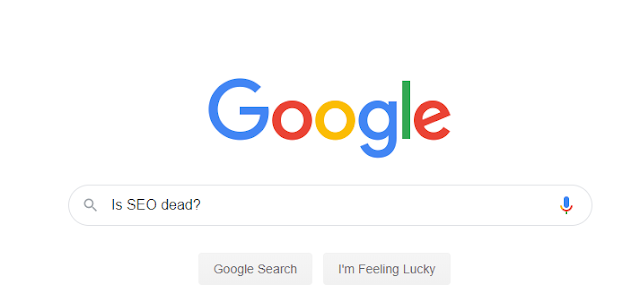Understanding Product Differentiation
Definition of Product Differentiation
Ever feel like you’re swimming in a sea of nearly identical products? Product differentiation is your lifeboat. It’s a strategy to spotlight what makes your offerings special, setting them apart from the rest while making them more appealing to buyers. At its core, it’s about pinpointing those standout features and letting your audience know why they should care. This approach not only sets you apart but also deepens your brand’s presence and cultivates loyalty.
Today’s crowded marketplace can always feel like one big blur. With so many similar choices, it’s hard to stand out. But when you highlight what makes your product different, you’re giving people a reason to pick you. The marketing team gets creative with campaigns that tell your product’s unique story, while sales teams use these distinctions to prove why your product is worth it.
Importance of Product Differentiation
Why should anyone pay attention to what makes a product different? Simply put, it’s a game-changer. Setting your product apart not only attracts more eyeballs but also persuades folks to pick yours over the run-of-the-mill options floating around.
Showing off a unique side strengthens your brand’s image, turning satisfied buyers into repeat customers and unofficial brand ambassadors. They’ll rave about your product to friends and family, increasing your fan base without you lifting a finger. Plus, if your product is truly unique, people are often willing to pay a bit more, boosting your profits.
By embracing differentiation, you bolster your brand’s reputation, steering clear of threats like knock-offs or new competitors trying to grab a piece of the pie. Offering something truly new means not only knowing what your customers want but giving it to them in a way that keeps them coming back for more.
Investing in product differentiation is like planting seeds for future success. It gives you a better shot at thriving in a competitive market. If you’re curious about taking your product to the next level, check out our discussions on how products grow and adapt over time with product development life cycle and how to place customers at the heart of your process with customer-centric product development.
Types of Product Differentiation
Grasping the various styles of product differentiation is key in cooking up an effective product differentiation strategy. We’re breaking it down into two biggies: vertical and horizontal differentiation.
Vertical Differentiation
Vertical differentiation puts the spotlight on quality differences. It’s all about stacking products up against each other based on measurable stuff like performance, toughness, or features. Shoppers size things up using these quality markers, often thinking the fancier stuff is better and worth that higher price tag. Think electronics—where a pricier smartphone might bring better specs, sturdiness, and performance than the cheaper models.
| Quality Level | Product Example | Price Range |
|---|---|---|
| High Quality | Fancy Smartphone | $800 – $1,200 |
| Medium Quality | Middle-of-the-road Smartphone | $400 – $800 |
| Low Quality | Budget Smartphone | $100 – $400 |
Nailing vertical differentiation can spin a tale of quality and value that earns a premium price, fattening your profit margins.
Horizontal Differentiation
Horizontal differentiation is the realm of non-quality distinctions. Here, products are defined by features like style, taste, or hue, capturing the quirky preferences of folks without a clear winner in quality. Picture the beverage aisle with soft drinks flaunting different flavors and looks but all sipping the same overall quality.
| Attribute | Product Example | Variations |
|---|---|---|
| Flavor | Soft Drink | Cola, Lemon-Lime, Cherry |
| Color | Charging Cable | Red, Blue, Black |
| Style | Shoes | Sneakers, Loafers, Boots |
The magic of horizontal differentiation lies in tuning into what the people want and positioning your products accordingly. It fosters a special bond with your audience, as they find products that vibe with their individual tastes and way of life.
Mastering and artfully employing both vertical and horizontal differentiation stands to boost your market mojo, woo a diverse crowd, and keep you on the cutting edge. For more juicy tips about the product development scene, check out our reads on new product development strategies and market research for product development.
Strategies for Product Differentiation
To really get noticed in a crowded market, you gotta make your product stand out with some clever moves. There are tricks to help make your product catch the eye of shoppers and give you that leg up in the market. Let’s chat about three cool ideas: playing with price, boosting quality, and beefing up service.
Price Differentiation
Think of price differentiation like showing off your product’s worth. It’s about setting a price that’s fair, considering what competition’s up to. This is your go-to if you’re looking to snag customers who can’t resist a deal but don’t want to skimp on quality.
| Strategy | What It Means |
|---|---|
| Premium Pricing | Charge a bit more to show off higher quality or a fancy vibe. |
| Competitive Pricing | Match other prices but showcase what makes yours special. |
| Discount Pricing | Tempt penny-pinchers with sales or promos. |
Nail this price game, and you’re looking at happy customers sticking around and your brand name spreadin’ around. Keep an eye on other folks’ prices so you don’t lose your edge.
Quality Differentiation
Got the good stuff? Quality differentiation is all about flaunting the top-notch features your product has over the others. Whether it’s about lasting longer or just being plain better, folks who care about these perks over penny-pinching are your people.
| Aspect | High Quality | Low Quality |
|---|---|---|
| Durability | Stays strong and stands the test of time. | Falls apart quicker than you’d like. |
| Functionality | Killer features and performance. | Just getting by with the basics. |
| Customer Satisfaction | Happy buyers coming back for more. | Angry customers, asking for refunds. |
Putting quality front and center and shouting about it in ads makes folks trust you more. Shape up those quality checks, and folks’ll stick around for the long-haul.
Service Differentiation
Service differentiation is like the cherry on top, giving extra care and perks with the product. Whether it’s a helpline that’s always on, or how you go above and beyond with guarantees and customizations, standing out with stellar service is the name of the game.
| Service Type | What It’s About |
|---|---|
| Exceptional Customer Support | Round-the-clock help, snazzy chat, and staff who know their stuff. |
| Warranties and Guarantees | Strong promises that the product will last and satisfaction’s in the bag. |
| Personalized Options | Letting folks tweak products to their heart’s content. |
Betting big on service can cement that bond with customers, keep ‘em coming back, and get them chatting about you in a good way to their pals. Let folks know what you’ve got up your sleeve in your marketing spiel.
Using these nifty differentiation tricks, you can carve out a unique spot for your brand, making you a top choice in the market. Feeling curious? Dive into our stuff on new product ideas and the ins and outs of product design.
Implementing Product Differentiation
So you wanna stand out in the crowd, huh? Well, making your product the shining star it deserves to be calls for a solid game plan. We’re talking bold branding moves, killer marketing promotions, and functional tweaks—each doing its part to set you apart from the rest.
Branding Strategies
Your brand’s identity isn’t just a label; it’s the face, the vibe, the essence that sets your product apart. By putting the right branding pieces in play, you can win hearts and minds out there like a charm. Things like cool packaging, a distinctive logo, and a consistent brand voice? They’re your traffic signals in the chaotic market street, making folks stop and reckon.
Crafting your brand doesn’t mean changing your product. Could be a new look for the package, an ad blitz, or lighting up your brand on social media. Anything that hooks customers on an emotional level swings the buying game in your favor.
| Branding Element | Description |
|---|---|
| Logo Design | Keep it simple and memorable—your brand’s calling card. |
| Packaging | It’s gotta pop, spotlighting your product’s best bits. |
| Brand Messaging | The steady voice that speaks the lingo of your crowd. |
Marketing Promotions
Nobody’s gonna beat a path to your door if you don’t give them a reason. Eye-catching marketing promos are your megaphone for shouting your product’s unique awesomeness from the rooftops. Think deals, bundles, time-sensitive offers—whatever gets their attention.
Pinpoint marketing does wonders to hit your target square on. Where they spend time, online or offline, you should be there with bells on, showing why your product’s the bee’s knees. Done right, these promotions turn prospects into your army of loyal fans.
| Promotion Type | Purpose |
|---|---|
| Discounts | Woo in fresh faces and spur on some sweet buying action. |
| Bundled Offers | Upsell by stacking goodies together for a healthy cart. |
| Limited-Time Campaigns | Create that gotta-have-it-now frenzy to push sales. |
Functional Features
When it comes to standing out, the magic often lies in how your product works. Revamping features to match what folks are looking for can be your ticket to score big. Keep it user-friendly, pack in savvy tech, or just tweak the look.
Sometimes, it’s as easy as pie—sprucing up a few components without giving your whole product a facelift can do the trick. Make sure you’re tuned in to what your crowd digs, because that’s what keeps them coming back.
| Functional Feature | Benefit |
|---|---|
| Enhanced Usability | Your product becomes their go-to pick—easy peasy, lemon squeezy. |
| Innovative Technology | Leaves competitors eating dust. |
| Design Updates | Draws in those who appreciate that classy touch. |
By nailing your approach with branding, marketing, and booting up your features, you’re not just making a sale. You’re carving out a loyal fan base that’ll stick with you through thick and thin. For deeper dives, check out our reads on the product development life cycle and new product development strategies.
Benefits of Product Differentiation
Setting up your business for success takes some savvy moves, and product differentiation is your ace in the hole. This approach will boost your place in the market, attracting loyal customers and setting you apart from the crowd.
Competitive Edge
Standing out is no easy feat, but with a solid product differentiation game plan, your brand can become the cool kid on the block. Offering unique flavors, top-notch quality, or a funky brand vibe can make your products irresistibly different—everyone wants the shiny new toy! It’s about grabbing eyeballs while dodging the big guy’s low-price strategy (Investopedia).
When people notice the special sauce in your products, they’ll pick yours over the rest. Products doing differentiation right can snag a bigger piece of the pie as folks decide based on price, quality, and brand swag (Investopedia). This edge isn’t just good for sales; it boosts profits and customer high-fives.
| Benefit | Description |
|---|---|
| Unique Brand Identity | Be the standout star with cool features or slick style. |
| Increased Market Share | Win over more fans with irresistible product flair. |
| Reduced Price Sensitivity | Shoppers ready to pay extra for what they love. |
Brand Loyalty
Winning hearts isn’t just about being different, it’s about being memorable. By offering something cool and unique, you build a bond with customers that’s hard to break. While every competitor screams, you’ll be the one they remember because your products hit them right in the feels (LinkedIn).
Loyal fans aren’t penny-pinchers; they’ll stick with you through thick and thin. Their faith not only guarantees return visits but also gets them chatting about your brand to friends, even boosting your rep without you lifting a finger. Differentiation isn’t just business—it’s a fortress against rivals trying to nab your regulars.
| Benefit | Description |
|---|---|
| Customer Retention | Keep ’em coming back for more with standout specials. |
| Enhanced Brand Reputation | Win the popularity contest through good vibes and word-of-mouth. |
| Increased Profit Margins | Fans willing to shell out for their favorites. |
Focusing on what makes your products special can catapult your biz to the top of the heap. With folks happier, price tags less of a talking point, and a leg up over the competition, differentiation is your secret weapon. When cooking up new ideas, dip into new product development strategies to keep up with what people are craving.
Examples of Successful Product Differentiation
Want some inspiration for amping up your product game? Check out how these rockstar companies – Tesla, Airstream, and Oscar Health Insurance – are killing it in product differentiation. They each have a unique knack for standing out in crowded markets.
Tesla
Tesla’s taken the car biz by storm, pushing electric vehicles that are like no other. They’re all about making their cars exotic techno-beasts, loaded with cool gadgets and a sleek vibe. Here’s what sets them apart:
- Slick Tech: Think autopilot magic and updates you can grab straight from the cloud.
- Eco-Friendly: Big on saving the planet, Tesla rides the green wave.
- Swanky Looks: Tesla cars ooze luxury, making you feel like a VIP on the road.
These elements have cemented Tesla as the kingpin of the auto scene. Craving more juicy tidbits? Dig into our reads on new product development strategies and product positioning strategies.
| Feature | Tesla Model S | Tesla Model 3 |
|---|---|---|
| Battery Range | 405 miles | 358 miles |
| 0-60 mph | 3.1 seconds | 5.3 seconds |
| Starting Price | $94,990 | $39,990 |
Airstream
Airstream is the cool cat of travel trailers, tugging at heartstrings with its mix of old-school charm and modern comforts. Here’s what makes them a crowd favorite:
- Iconic Look: Those shiny aluminum exteriors are a road show all on their own.
- Cozy Meets Classy: Interiors that feel like a nostalgic hug with a hint of chic.
- More Than Just Trailers: Airstream sells a lifestyle, calling out to folks with a zest for adventure.
This mojo has made Airstream a sensation among wanderlusters. Want to dig into more design-savvy tips? Scope our guides on product design and development.
| Model | Length | Sleeping Capacity | Starting Price |
|---|---|---|---|
| Airstream Bambi | 16′ | 2 | $45,900 |
| Airstream Classic | 30′ | 4 | $149,900 |
Oscar Health Insurance
Oscar Health Insurance has flipped the boring old insurance scene on its head, making it clear-cut and user-friendly. Check out how they break the mold:
- Simple and Sweet: Their interface is as easy as a Sunday morning.
- Personal Touch: Custom health plans that get what you need.
- Clear Talk: Coverage info without the confusing lingo.
By keeping it real, Oscar cuts through the noise in the busy insurance world. For some expertise on crafting user-driven products, browse through customer-centric product development and market research for product development.
| Feature | Oscar Plans | Competitor Plans |
|---|---|---|
| User Interface | Highly Intuitive | Varies |
| Average Premium | $300/month | $400/month |
| Coverage Options | Personalized | Standard Options |
Peeking into these success stories gives you a treasure trove of ideas for your own product differentiation strategy. By jazzing up unique traits and leveling up how customers feel about your product, you can carve out your own slice of the market pie.
Challenges in Product Differentiation
Navigating the sea of product differentiation as a CEO, business owner, or marketing executive isn’t always smooth sailing. But spotting the hurdles before you trip over them? That’s most of the battle.
Initial Investment
Kicking things off, it’s all about that dough upfront. Making a product that stands out usually means pouring cash into research and development. We’re talking getting cozy with market research, finessing prototypes, and maybe even splurging on top-notch materials or tech. Sure, shelling out this kind of money can seem like a mountain, especially for the little guys or fresh startups. But don’t sweat it—score big with your product, and you’ll find those initial costs were peanuts compared to the potential payday down the road.
| Money Move | Wallet Damage |
|---|---|
| Market Research | $5,000 – $50,000 |
| Prototype Development | $10,000 – $100,000 |
| Production Scaling | $50,000 – $200,000 |
Communication in Competitive Markets
Standing out in a crowd of chatty brands isn’t simple. With everyone and their grandma pitching ideas, you’ve got to shout your product’s big draws loud and clear. You’ll need more than a snazzy ad; think of a killer storyline that makes your audience feel seen and heard, setting your stuff apart from the wannabes. This could mean rethinking your marketing swagger or giving your product’s packaging a fresh makeover.
Imitation by Competitors
Copycats are everywhere, and they’re quick to nick your genius. You whip up an original product, and bam—competitors might steal your spark, chipping away at your piece of the pie. To keep your edge, don’t let your guard down. Keep fresh ideas flowing and keep your brand’s charm parade alive. Lock down a squad of die-hard fans, and even if competitors come knocking, they’ll have a tough time bumping you from the chosen spot. Tweaking your product game plan to dodge overdoing it or slacking off is also key, especially as buyer tastes switch up.
Getting wise to these hurdles and taking them head-on means you’re way closer to building a product differentiation strategy that’ll crush it out there in the market jungle.
The Impact of Product Differentiation
Getting a grip on how your product stands out is your secret weapon for long-term success. Here, we’re talking about three main areas that take a hit when you nail differentiation: snagging more market share, pricing like a pro, and locking down brand identity.
Market Share Growth
Standing out means snagging a bigger slice of the pie. By wooing consumers with your one-of-a-kind spin on things like price, style, or function, you can bring in fresh faces and keep the old ones around. Brands that stay loved and respected grow faster than you can say “buy one, get one free,” outpacing their rivals with ease (Investopedia).
| Market Share Impact | What’s in Store? |
|---|---|
| More Customers | Cool features pull in everyone and their grandma. |
| Less Competition | When you’re unique, fewer folks can match you. |
| Stickier Customers | Happy folks come back for more. |
Pricing Strategies
Different means not boring when it comes to pricing. With the right play, you can make price less of a deal-breaker by packing in some real value. As folks see why your stuff rocks, they won’t be tempted by a cheaper knockoff. This keeps your profits healthy and your price tags comfy.
| Pricing Trick | What’s the Perk? |
|---|---|
| Top-Shelf Pricing | Charge based on the extra love you put in. |
| Value Deal Pricing | Bring in the budget hunters without losing your edge. |
| “Buy More, Save More” | Make a deal out of buying in bulk or sets. |
Brand Identity
A strong game plan makes your brand memorable. It shapes how folks see you and builds loyalty. Highlighting unique stuff like cool design, killer quality, or standout service creates a vibe that sticks. Plus, folks will think twice before trying out the newbie in town (LinkedIn).
| Brand Identity What’s What? | What it Does? |
|---|---|
| One-of-a-Kind Claim | Shows why you’re worth noticing. |
| Trusty Reputation | Quality means folks trust you with their dollars. |
| Fan Love | A strong brand gets people chatting and involved. |
Bottom line? Differentiation is a powerhouse for your business mojo. From gaining more market ground to slick pricing moves and a solid brand, the impact is big time. For more juicy tidbits on crafting products, dive into our piece on the product development process in marketing.




















